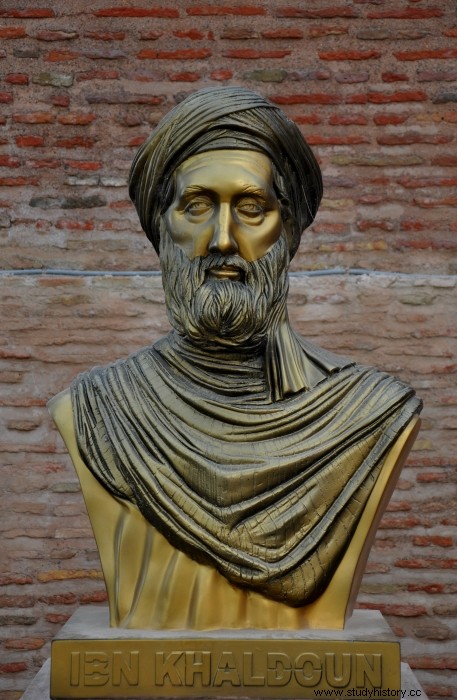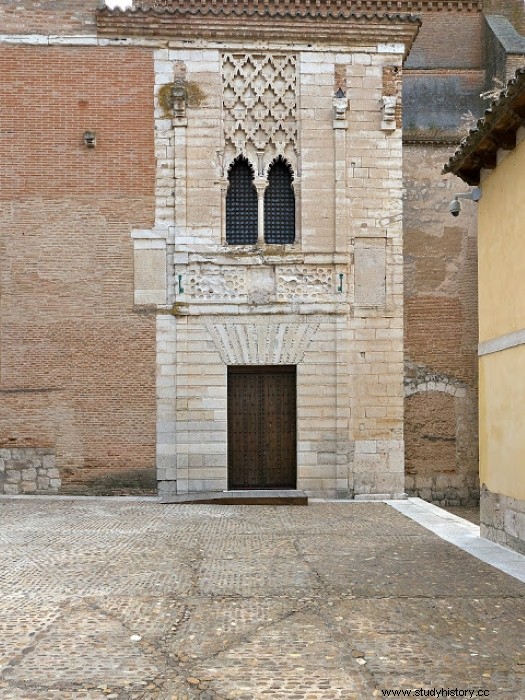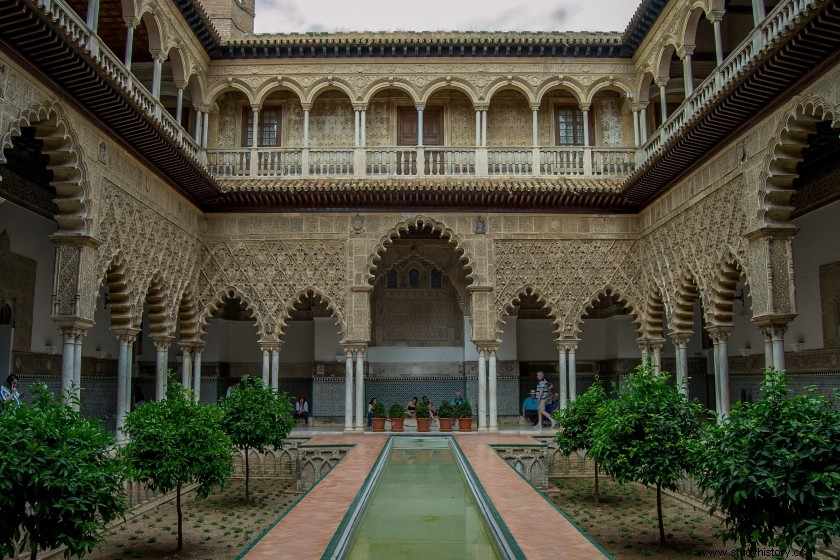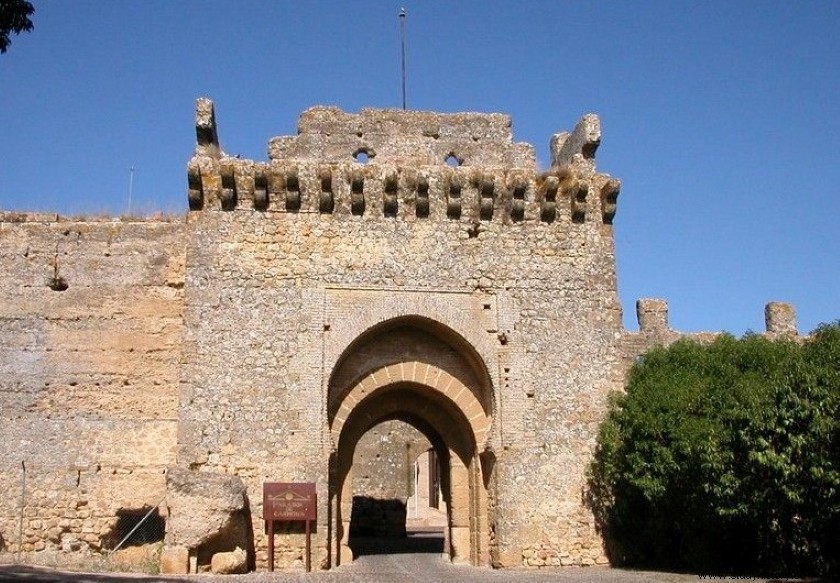
In the middle of the fourteenth century, in the middle of the century , one of the most unique reigns in the history of Spain begins in Castile. Pedro I of Castile left, or sought, enemies everywhere. From the perspective of time, we can think that Pedro I of Castile received a Castilian Crown in the form of a poison dart. His father, Alfonso XI, died in the year 1350. At that time, Pedro, son of María de Portugal, was the only legitimate son according to the canons of the Catholic Church. But illegitimate there were a few, that we know at least eight offspring were still alive. All of them fathered by Leonor de Guzmán . It is evident that good old Alfonso XI decided to spend half his life in the bed of his lover.

Pedro I of Castile
Peter I was immersed in a reign full of wars. The first and obvious ones were with his stepbrothers, who saw that, at the first change, his mother was put to the knife. It happened in 1351, the instigator of the murder was María de Portugal, presumably somewhat annoyed at having been a zero during the life of Alfonso XI. Castile embarked on a Civil War between the supporters of Pedro I and Enrique de Trastámara, the eldest son of Leonor de Guzmán. A war that even brought the Hundred Years' War to Castile, the medieval powers of England and France supported the respective contenders to win over the powerful ally who would become the winner of the Castilian dispute. But not content with the dynastic struggle, Pedro I of Castile became involved in a war with the Crown of Aragon, supposedly weakened in the mid-14th century by its Mediterranean battles.
Muhammad V, the friend of Pedro I.
Pedro I made so many enemies that he inescapably had to find an ally. He did not have to look very far, he found it in the Kingdom of Granada, and in addition to being an ally, historiography highlights the great friendship that arose between the two monarchs. It should be noted that Muhammad V, who was younger than Pedro I, came to the government of the Renio de Granada in 1354, when he was only 15 years old. That is, between the two monarchs there was a difference of 5 years.

Patio de los Leones in La Alhambra, built by order of Muhammad V, after the death of Pedro I
The first relations arose at the end of the year 1358. Castile was facing an Aragon that had a larger fleet than the Castilian. Pedro I requests naval support from the Sultan of Granada. It should also be noted that in this period the Castilian king traveled the Mediterranean in a ship made by the Arabs, baptized with the name of Uxel.
Two years later, at the end of 1360, while Pedro I was in Seville, he received the news of the overthrow of his new ally. It seems that the Castilian king did not mind losing the advantage that he had at that time in his battle against the Aragonese. His friend needed help, and the Castilian king embarked his hosts in a new fight, in this case against the so-called King Bermejo, a pseudonym by which Muhammad VI is known. The troops of the overthrown, with Castilian support, begin to recover cities, and carry out violent raids to make the new sultan of Granada lose control of the territory. Cornered, King Bermejo decides to go to Seville in 1362 to place himself at the side of Muhammad V as a vassal of the Castilian king. The gesture did not convince Pedro I, who had him arrested, to execute him a few days later outside the Alcázar of Seville.
The relationship between Muhammad V and Pedro I, halfway between vassalage and friendship, lasted until the death of the Castilian king at the hands of his stepbrother Enrique de Trastámara . A few months before this, the sultan of Granada had sent a very large army to Córdoba, one of the last cities lost by Pedro I in the Castilian Civil War. This contingent had 8,000 foot soldiers, 7,000 horsemen, and 12,000 crossbowmen, without a doubt, irrefutable proof of the excellent relationship between the two.
Clearly, this relationship went far beyond the battlefield. In addition, it is not only reflected, as we will see later, in the mutual fascination with architecture. The meetings were so intense that they even led them to share the services of prominent figures in Muslim culture and politics. Ibn Khaldun , one of the great sages of the Middle Ages, tireless traveler, historian, geographer, philosopher and economist lived in the Court of King Pedro I for long periods of time. As well as, Ibn al-Khatib , the great vizier of Muhammad V, who advised the King of Castile politically on several occasions. All together they led Pedro I to a constructive policy, which left outstanding Muslim-inspired palaces in the Crown of Castile.

Ibn Khaldun.
The Muslim Palaces of Pedro I.
The adoption of this Muslim architecture went far beyond simple taste, or architectural caprice. Undoubtedly, it was his way of directing Castile towards a new conception of the state, and that is where those intense sessions with Ibn Khaldun or Ibn al-Jatib are most reflected. The Crown of Castile was one of the most decentralized states, the high nobility continued to have enormous political and military importance. Pedro I, in a continuous fight against her due to the inheritance left by his father, has no choice but to take a step forward to lead the Crown to a more authoritarian and centralized state model.
The Muslim palaces are indicative of this new political form, to which King Pedro I wants to direct Castile. The Kingdom of Granada, as was customary in the Muslim world, was a model of political centralism around the figure of the sultan . Its palaces had numerous symbols, and included rooms typical of this political form. One of the most prominent was the Qubba , a religious room finished off with spectacular heavenly vaults, the central figure, evidently that of the monarch, stood out in said room, it was used by Pedro I to impart justice. One of the best examples is found in the Hall of the ambassadors of the Alcázar of Seville.

Hall of the ambassadors in the Alcázar of Seville
A similar effect was produced by the monumental facades, topped with an upper balcony from where the monarch exhibited himself before his subjects.
It should be noted that in some of the four palaces that we present to you, the beginning of the works was prior to the friendship narrated between Pedro I and Muhammad V. This aspect denotes that the Castilian king had regular contacts with the Kingdom of Granada . The intervention of the Nasrid architects is clearly evidenced in the ground plan of these buildings, ruling out that those in charge of said works were of Mozarabic origin. What is evident is that after the coup in the Alhambra, architects, plasterers and craftsmen in general emigrated to Castile to work under the orders of King Pedro I.
One of the aspects that drew attention in the 19th century, when studying these buildings, was the Arabic inscriptions that they all had on the facades and main rooms of the palaces . It was one of the main indicators that these works were carried out by Nasrids. Some inscriptions that visitors to those palaces surely did not understand, and perhaps even Pedro I himself. Islam was very present in the Hispanic Middle Ages, the border space was a permeable place, and yes to the sultans used them to intimidate their visitors , on the other side the result of that vision was undoubtedly very similar. It is really striking that a Muslim makes an inscription for a Christian king in the guise:
“Glory to our lord King Don Pedro, help him God”

Doña María Padilla Palace in Astudillo.
Up to six wives passed through the life of Pedro I, all of them in search of political alliances for his noble war. But in his will he only welcomed María Padilla as legitimate, which, without a doubt, denotes that it was her true love.
María Padilla founded in 1353 a monastery of Poor Clare nuns in the Palencia town of Astudillo, where her family had her heritage. Both had met a year before, but in that same year the king takes Blanca de Borbón as his wife. Next to the monastery, in a common event at the time, King Pedro I had his own palatine enclosure erected, where she would stay during her visits to the one who became his mistress.

Note that the conservation of the place has been very scarce. Today we can only enjoy some architectural elements of its original construction, such as the façade, the best preserved, or remains of the decorations of the main hall and the hall of the palace. The building, which in its time was the most modest of those ordered to be erected by Pedro I, houses a convent museum.
The Palace of Tordesillas.
Tordesillas was one of the most important towns in the middle of the 14th century, several facts prove it, especially the stay of several women very close to the Castilian kings. Among them, Leonor de Guzmán, lover of Pedro I's father, and after her death, her rival, the mother of the Castilian king, María de Portugal.
King Alfonso XI, let us remember, father of Pedro I, ordered the erection of a monastery for the Poor Clares in 1340, after the great victory of the Castilians and the Portuguese against the Benimerines in the Battle of the salty In 1354, after Pedro I's mother moved there, the Castilian king ordered the construction of the Tordesillas Palace. His mother, her lover María Padilla, and their daughter Beatriz stayed in it consecutively.

As in the previous case, few Nasrid vestiges remain in the current building run by the Poor Clares Monastery. The façade is once again the best preserved part of the building, and an example of union between the Nasrid and Castilian builders. One of the current parts of the building reveals the original layout of the Tordesillas Palace, since it was articulated around a large Nasrid garden, today occupied by the Cloister of the Vergel, after the renovations undertaken between the 17th and 18th centuries.
Palace of Pedro I in the Alcázares of Seville.
His father, Alfonso XI, had already made Seville his royal residence. Like him, Pedro I spends most of his reign in the city of Guadalquivir. It is evident that the Palace that he ordered to be built there between the years 1356-1366 was in dimensions much more important than the previous ones.

Courtyard of the Maidens of the Sevillian Alcazar
On the remains of the old enclosures of the Sevillian fortresses of the Umayyad and especially Almohad dynasties, which turned Seville into the Andalusian capital, Pedro I had his 2,500 m2 royal palace built. Rooms, halls, patios, fountains or ponds that art historians compare directly with the Alhambra in Granada. It goes without saying that today it is the only place in Spain where you can fully enjoy the constructions that Pedro I ordered to be built during his reign.
Fortress of King Don Pedro in Carmona.
Near Seville, in the direction of Córdoba, King Pedro I ordered the construction of the last Muslim palace. We do not know its purpose, but it seems evident that it would be a resting place for the Royal family. On top of an old fortification erected by the Muslim lords of the Carmona Taifa, this royal palace was erected, which archaeologists define as a kind of little brother of the one built in Seville.
Pedro I ordered his family to take refuge there in his last days, when the troops of his half-brother Enrique lent themselves to overthrow him. They endured, under the command of Marín López de Córdoba, two more years after Pedro's death, turning Carmona into the last bastion of the followers of the last Castilian king of the House of Burgundy.

Marchena Gate.
Today only the so-called Marchena Gate remains standing, which gives access to the current Carmona National Parador. The rest of the 14th century building succumbed over the years, affected by two earthquakes, that of Carmona itself in 1504, and the devastating Lisbon earthquake in 1755.
Recommended reading.
Pedro I's life is one of the most interesting of the medieval kings in Spain. It was a step forward in the modernization of the Castilian Crown, but it was also one of the most gruesome periods. Murders, betrayals, and endless wars punctuate the nineteen-year reign of this Castilian monarch, more friendly with the Nasrids of Granada and the English of the "Black Prince", than with any of the other peninsular kingdoms.
Recently, from the hand of Almuzara, we have received this fictionalized history of the life of Pedro I of Castile. The author of it, Julio Castedo, is passionate about the world of cinema, his essay "the hundred best films of the 20th century" denotes it. His first novel, "The Chess Player", was made into a film in 2017. A very unusual way of writing in current historical literature endowed with enormous verbal richness .

King Don Pedro in Historioteca
